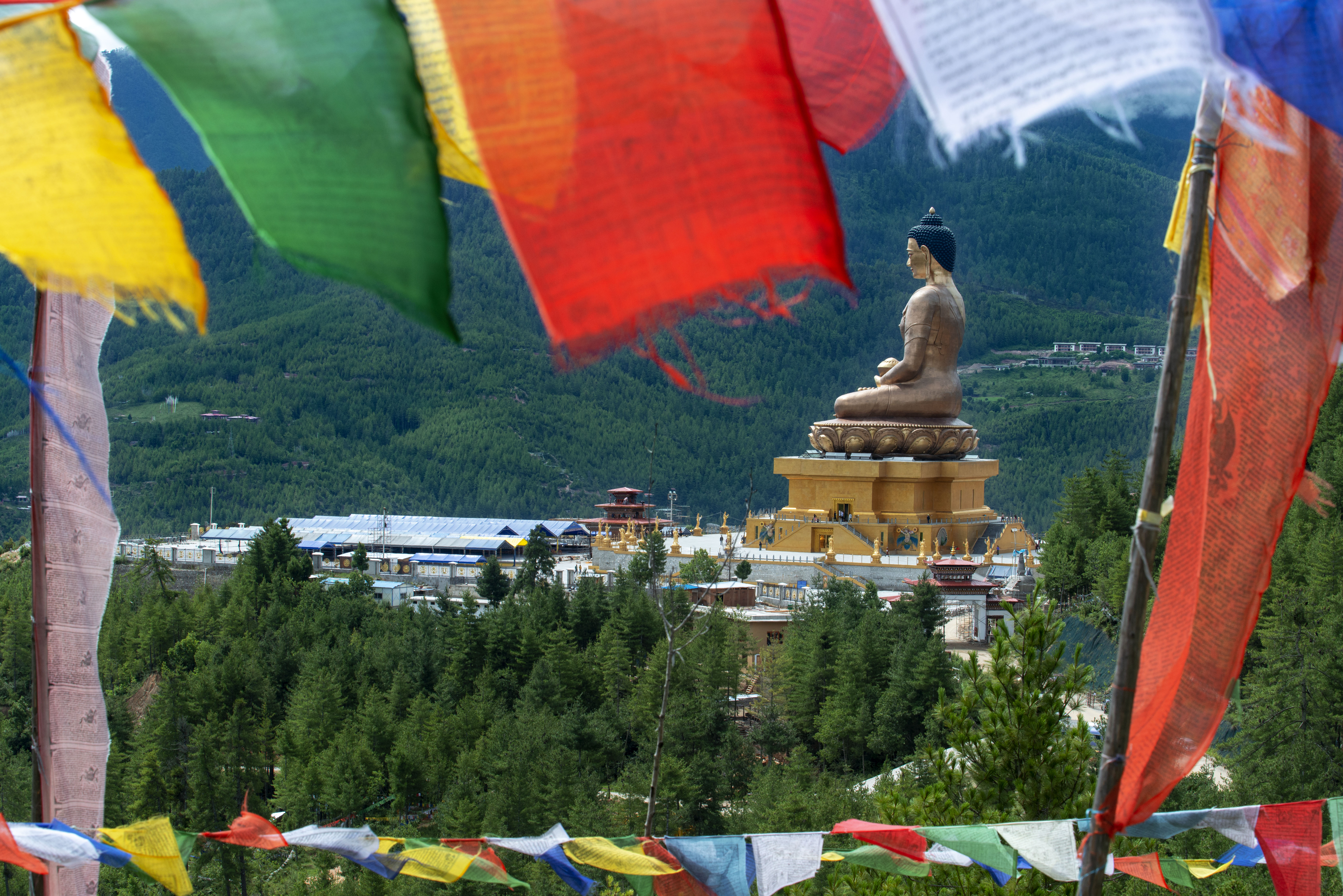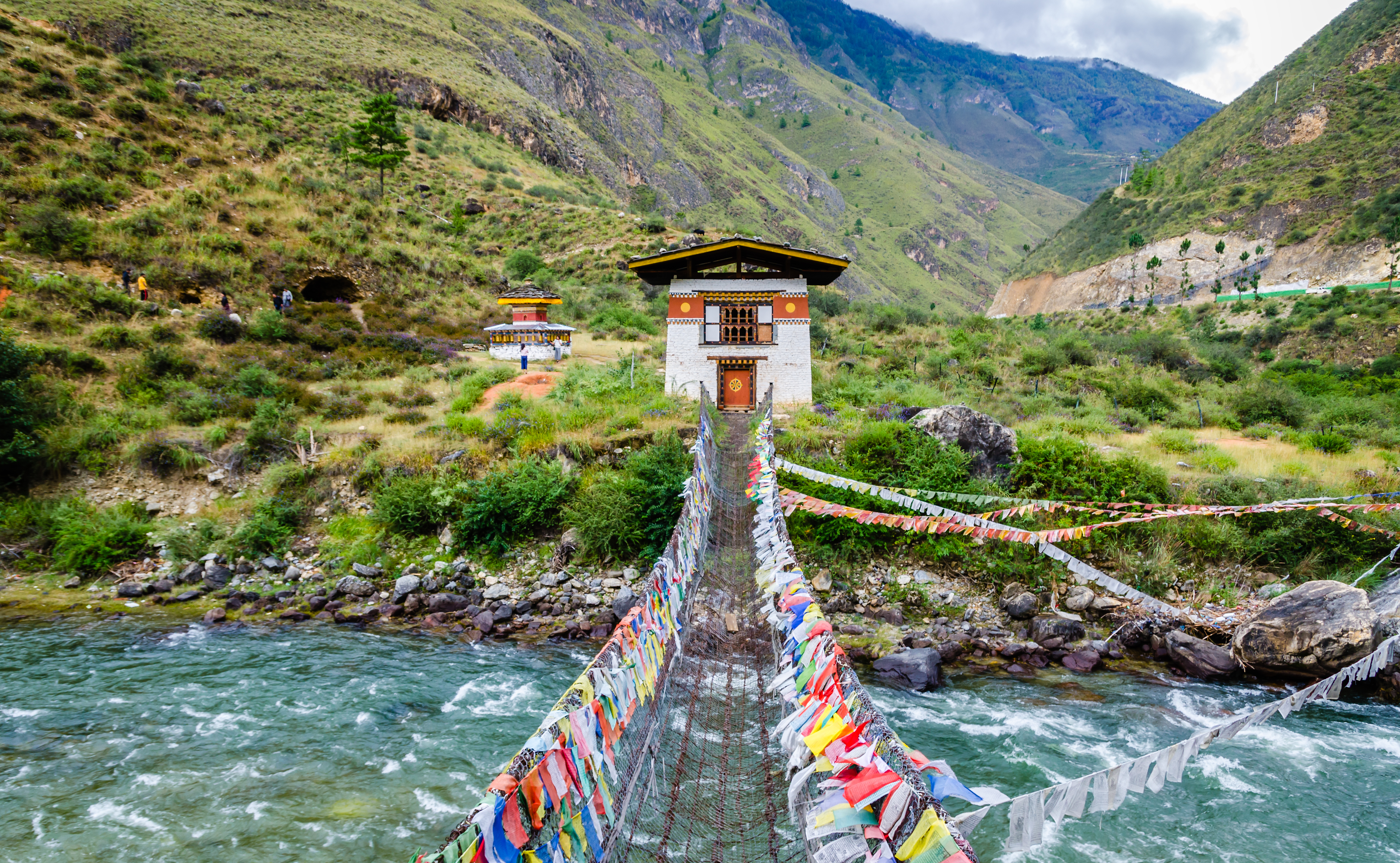Bhutan is a remote country in the eastern Himalayas filled with temples, monasteries, colorful prayer flags and gorgeous scenery. Since opening to outside visitors 50 years ago, the country has taken a slow and sustainable approach toward tourism. Now, a recent push to revive the economy and keep young people from moving abroad is slightly reshaping this strategy, with a new focus on bringing in diverse visitors from around the world.
The basics of Bhutan

Bhutan sits between China and India, and its neighbors to the south accounted for more than 73% of arrivals in 2019, when a record 300,000 tourists visited the country. The government’s goal is to reach that number again, but with a “more diverse consumer base,” the Bangkok Post said, specifically one from the U.S., Australia and Europe.
Bhutan measures the well-being of residents on the Gross National Happiness index, looking at factors “from living standards to health to cultural and environmental preservation,” and with this in mind built its tourism reputation on “low-volume crowds and high-paying guests.” Bhutan charges tourist fees, but to broaden its appeal to visitors of all income levels, lowered its Sustainable Daily Fee to $100 through August 2027. Bhutan takes sustainability seriously and is the world’s first carbon-negative country.
All foreign visitors, with the exception of Indian nationals, need a visa to enter Bhutan. There is one international airport, served by Bhutan Airlines and Drukair, with direct flights from Kathmandu, Bangkok and New Delhi. Outside of the cities of Thimpu and Paro, you will need a guide, and the Bhutan Tourism Services Portal directs travelers to experienced tour operators, trip leaders, accommodations, restaurants and homestays.
What to see in Bhutan

Bhutan is the world’s last Vajrayana Buddhist kingdom, and “majestic” temples and dzongs, or fortified buildings, dot the mountainous landscape, Condé Nast Traveler said. A three-hour hike up a “steep, wooded cliff” leads to the sacred Tiger’s Nest, an “iconic” 17th-century monastery.
The Trans-Bhutan trail crosses the entire country, taking “intrepid” hikers 30 days to complete, National Geographic Traveler said, but you can tackle individual sections as well. One stretch, the Divine Madman’s Trail, begins in the clouds as you make your way down the Dochula Pass, where you will find villages and a house that is “said to have been struck by an arrow shot from Tibet” in the 15th century.
Life is busier in the capital, Thimphu, a city that “beautifully combines culture with a cosmopolitan vibe,” Lonely Planet said. There are no traffic lights here (or anywhere in Bhutan), and it is fascinating watching “immaculately dressed policemen manually direct traffic.” During the day, visit spots like the National Memorial Chorten and Bhutan Postal Museum, where you can make your own stamps, and at night check out the bar scene. The Weekend Market happens every Thursday through Sunday, with local vendors selling produce, wild honey, dried fish and “deliciously aromatic raw ingredients” for incense.
Being a thoughtful visitor

Folktales, myths and legends are a major part of Bhutan’s cultural identity, and visitors should approach this with an “open mind” and “consider setting aside your preconceptions,” Lonely Planet said. Bring modest clothes that cover shoulders and knees to wear when entering temples and monasteries, and remove your shoes and hats. When shopping at markets, pay the listed price — in Bhutan, “aggressive negotiating tactics are a foreign concept.” It can take several months to create traditional textiles, and “prices reflect the meticulous work and cultural richness woven into each piece.”